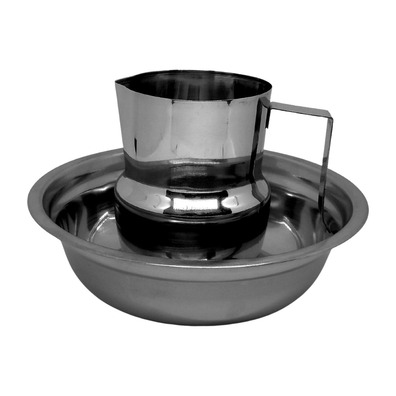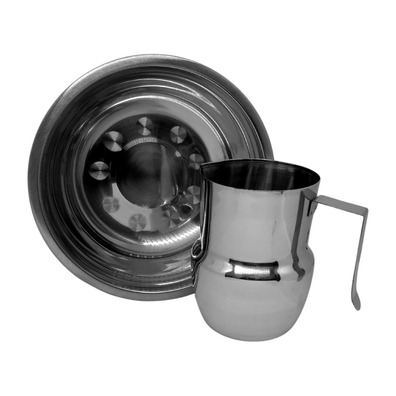Stainless Steel Ewers and Basins | Catholic Church Mass
75,00€
Taxes includedCatholic product in stock. Products ready to be shipped. You can check the approximate delivery time during the purchase process.
Stainless Steel Ewers and Basins | Catholic Church Mass
- Liturgical handwashing basin set.
- Stainless steel pitcher and plate.
- Plate or tray with a diameter of 19 cm (7.48 inches) and a height of 5 cm (1.97 inches).
- Pitcher with a height of 11 cm (4.33 inches) and a diameter of 9 cm (3.54 inches).
Advantages of the Stainless Steel Ewers and Basins
The stainless steel liturgical ewers and basins is an excellent option for use in religious ceremonies, as it has several properties that make it suitable for use in churches and chapels.
This material offers multiple benefits such as:
- High resistance to impacts, falls, and other physical damage.
- Corrosion resistance. It can be in constant contact with water without suffering wear or damage.
- Stainless steel does not absorb odors or flavors, ensuring no water changes are used during ceremonies.
- It can be washed both by hand and in the dishwasher, simplifying its maintenance and ensuring its hygiene.
- It does not release toxic substances or alter the properties of the water.
Why Does the Priest Wash His Hands During Mass?
The ritual of the Mass is structured into different parts that the priest performs meticulously.
One of the most important is the consecration of the bread and wine. Before beginning this culminating moment of the liturgy, the priests prepare by washing their hands.
The handwashing is a significant gesture in celebrating the Mass, as it carries significant symbolism.
The handwashing during the liturgical celebration is not merely an act of hygiene but symbolizes the inner purification that the priest seeks before the consecration of the bread and wine.
While the priest washes his hands, he recites a prayer in a low voice based on Psalm 51: " Wash me, O Lord, from all my iniquities, and cleanse me from my sin. This prayer expresses the desire for spiritual purification not only for the priest but also for all the faithful participating in the Eucharist.
The General Instruction of the Roman Missal (GIRM) mentions this rite, emphasizing that the priest performs it after the incensation or the prayer of repentance. In this way, the priest asks for God's help to be purified both inwardly and outwardly in preparation for the most sacred moment of the Mass.
The act of handwashing has its roots in the tradition of the early Christian communities.
Saint Cyril of Jerusalem explains that this act is not merely to clean the hands of physical dirt but represents the purity of deeds and the absence of sin.
Hands are a symbol of human action, and by washing them, the need to be free from guilt and reproach when approaching God's altar is emphasized.






